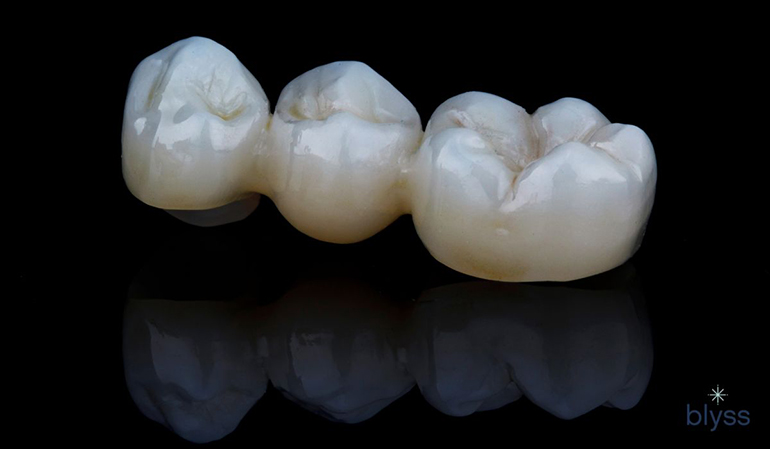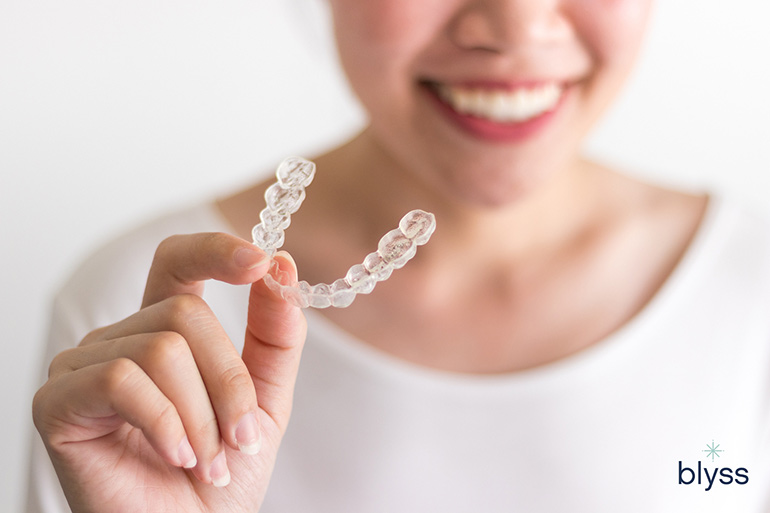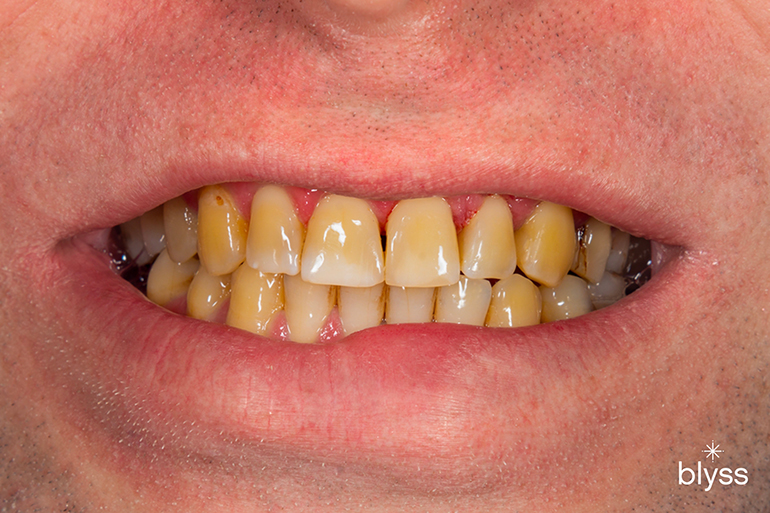Are you on the hunt for a smile that is an embodiment of your crowning glory? To that end, you may be considering opting for zirconia crowns to help move your smile line in that direction.
An esthetically designed zirconia dental crown may be just what you need to make your tooth (or teeth) stronger with an enhanced appearance.
Your cosmetic dentist in San Diego may recommend a crown for a variety of reasons.
The dentist may recommend installing a dental crown for a tooth that’s not the same shape and size as your other teeth or has a large filling and requires further support and reinforcement.
The world of dentistry is a fascinating one, and as technology continues to evolve, our dental care options are expanding along with it.
Zirconia crowns are one such example of an exciting frontier of development in dentistry. More importantly, the evolution of zirconia-based dental restorations is rapidly changing how I think about and visualize the dental cosmetic enhancement and rehabilitation experience for my clients.
Related Article: 2022 Insider Tips In Choosing The Best Type of Dental Crown for Your Situation
So let’s touch base with some common questions, talking points, and treatment options regarding Zirconia crowns:
What is Zirconia and where does it come from?
Chemically speaking, zirconia is the oxide of zirconium – a metallic chemical element (symbol Zr)
Both zirconium and zirconia are derived from zircon: a by-product of the mining (and processing) of underground mineral and sand deposits.

Zirconia comes from zircon, a naturally occurring mineral. Technicians melt this mineral to transform it to zirconia which is a common material in dentistry.
In essence, melting zircon at extremely high temperatures (during manufacturing) can convert it into zirconia. This gives us molten zirconia or zirconium dioxide.
You can also find zirconia as a naturally occurring compound/oxide in the mineral baddeleyite.
And that just about wraps up our mini chemistry class!
Zirconia crowns or zirconium crowns?
Also known as porcelain-free crowns, this type of dental crown consists of one type of material only, i.e. zirconia.
Zirconia, also known as zirconium dioxide, is the ceramic material of choice in the manufacturing of quite a few dental products, including implant-supported dentures or other prostheses.
The simple reason is that zirconia, as a material, is very strong and durable. You can think of zirconia as a distant man-made, or naturally occurring crystalline cousin of diamonds!
It is harder than both gold and alloys of other precious metals, making it ideal for crowning and repairing teeth damaged by extensive decay or trauma.
Moreover, it boasts a high resistance to wear compared with other common materials used in dental crowns, such as porcelain or gold alloy.
Standalone zirconium is not used for making dental crowns because it would be too ‘glassy’ in terms of its behavior, texture, and appearance.
This would mean increased chances of breakdown and fracture of the material in the face of even the slightest mechanical loading and/or distress while functioning as a crown.
Hence, in dentistry, we use zirconia as the primary material for our zirconia-based dental crowns.
Zirconia for dentistry – same as used in jewelry?
As you may already know, zirconia is common in jewelry making as an alternative to diamonds. It displays and possesses almost identical properties native to diamond.
These include appearing flawless when light passes through it (refraction) and displaying exemplary durability.
Moreover, it is similar to diamond in terms of brilliance values.
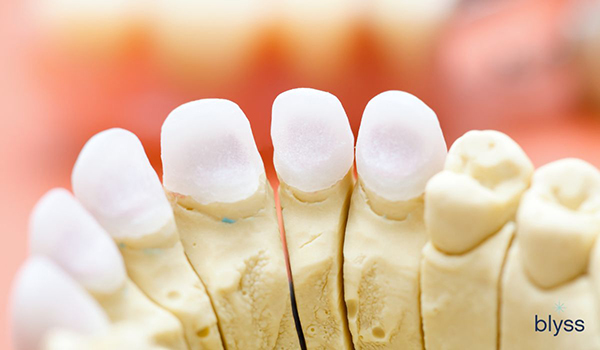
Zirconia is a commonly material in dentistry because of its strength and durability.
The core material – zirconium dioxide or zirconia, used in dentistry and jewelry, are similar in terms of their chemical composition and structural integrity.
The chemical form used in both instances is cubic zirconia; which is hard, stable, and colorless.
There may be some subtle variances though. Such as the addition of some minor elements (I’ll touch on those later).
Another difference would be that zirconia used in jewelry is offered in a wide range of colors. This makes it popular as a gemstone and a proxy diamond.
Why should you request zirconia crowns from your dentist?
If you ask me to sum up zirconia crowns in 3 words, I will say “strong, durable, and long-lasting”. You’ll also find them more comfortable than other types of crowns. Your cosmetic dentist in San Diego can make your zirconia crown(s) look just like your natural teeth.
Plus, you get a great smile that’s easy to maintain. To top it off, zirconia crowns are the perfect choice if you’re looking for something durable yet comfortable to wear inside your mouth every day—and for years on end.
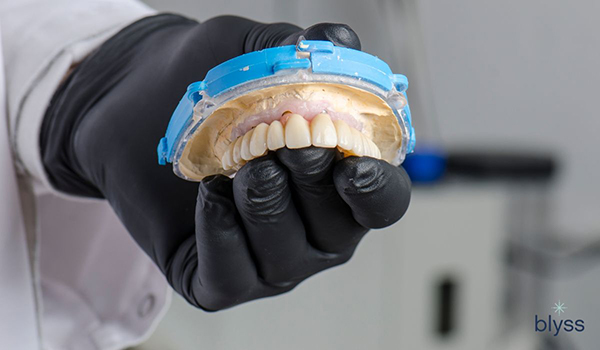
If you want strong and natural looking teeth replacement or restoration, ask your dentist about zirconia.
All things considered (including their strength), this material is ideal for any dental restoration procedure where longevity is a strong factor. This is because zirconia crowns will not:
- break or crack easily as traditional porcelain veneers would,
- take up stains from food as resin composite restorations do,
- become cloudy over time like some metal alloy-based restorations will (without professional cleaning).
What are the different types of zirconia crowns used in dentistry?
Two variants are clear winners when it comes to the preference of use by dentists, and one less commonly employed variant:
Variant # 1: Zirconia with a porcelain overlay
The first type is a zirconia crown with a porcelain overlay. Also referred to as framework zirconia, it’s a nearly ideal choice for crowning the front teeth or in the case of multiple teeth that require covering with a dental bridge.
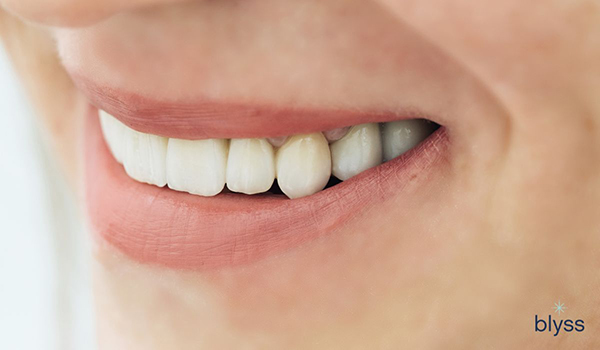
Zirconia with porcelain overlay gives the tooth more translucency similar to natural teeth, while retaining the strength and durability of zirconia.
As the name implies, porcelain is fused on top of the underlying core zirconia substructure or framework through a high-temperature process that allows both materials to bond together as one piece.
This lends the much coveted lifelike glassy look on the surface, while still retaining the other qualities of zirconia in the final restoration such as strength. It also gives the tooth more translucency similar to natural teeth.
Variant # 2: Monolithic zirconia
Generally speaking, a monolithic zirconia dental crown is made from one piece of zirconia i.e. a solid block of pure zirconium dioxide (ZrO2), one of the strongest materials available in dentistry.
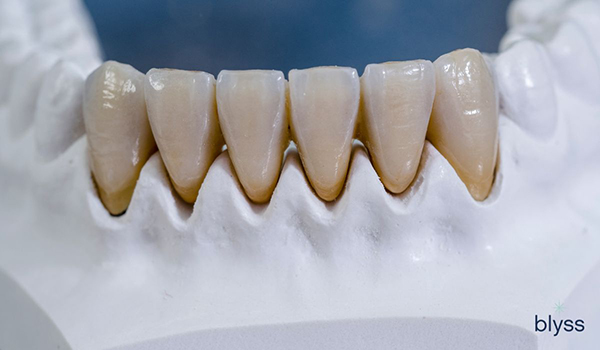
Monolithic zirconia is considered to be one of the strongest materials for teeth replacement and restorations.
This means that the crown is much stronger than a traditional layered porcelain or metal dental crown, but it’s also more expensive.
These are the most common types of zirconia crowns. Monolithic zirconia is used to make full-contour zirconia crowns.
Variant # 3: Layered or hybrid
A hybrid zirconia-based crown has several different layers of zirconia compacted one on top of another.
Each layer is bonded together to create the finished product, which is even more durable than monolithic or standalone zirconia. These layers are then fused to a base metal to create a restoration that’s strong yet comfortable for your mouth.
As such, it may be the best option for patients with very heavy biting forces or who grind their teeth at night (bruxism). A layered zirconia dental crown can also be customized to meet your specific cosmetic needs or preferences.
Are all zirconia crowns created equal?
While it can be said that not all zirconia crowns are created equal, most dental laboratories usually subscribe to standard international specifications and guidelines in terms of material composition and other manufacturing parameters.
Notwithstanding some minor differences in terms of addition of stabilizing elements etc.
Dentists employing dental laboratories that adhere to strict international best practices and guidelines and cutting-edge technology, such as CAD/CAM, for making zirconia crowns will be delivering a higher quality prosthesis for sure.
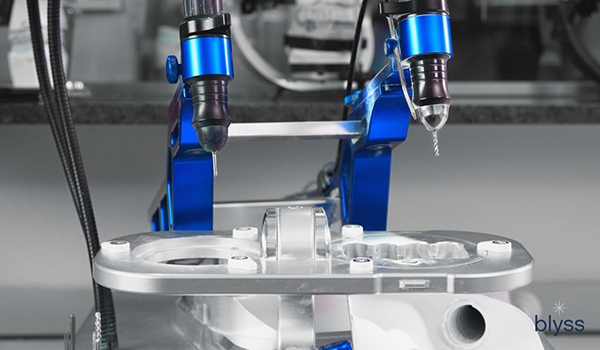
CAD/CAM is one of the latest technologies in dentistry. Expect higher quality teeth replacement and restorations if your dentist uses this technology.
More importantly, here are the factors that ultimately determine the final quality, finish, comfort, and longevity of a zirconia dental crown:
- The final surface finish of the crown: determined by the quality of the dental lab used by the dentist (or their own in-clinic CAD/CAM setup).
- The final fit of the crown. The success of this stage depends on the accuracy of the dentist’s cutting technique.
- The shade of the crown.
- The quality and shade of the filling material used underneath the crown for a natural look.
Brands of zirconia? What are the top brands?
When talking about zirconia crowns, there is not much difference in terms of clinical performance per se between different manufacturers.
Nevertheless, some dental labs may resort to using non-branded zirconia variants for manufacturing crowns. Non-branded and low-quality zirconia may pose health risks. That’s one of the reasons why at Blyss Dental, we only use top-quality materials and laboratories for all our procedures.
Premium zirconia crowns come from zirconia sourced from top-end branded companies or manufacturers.
These manufacturers comply with strict international safety and clinical performance standards – posing minimum to no risk of allergic reactions or any other side effects to you.
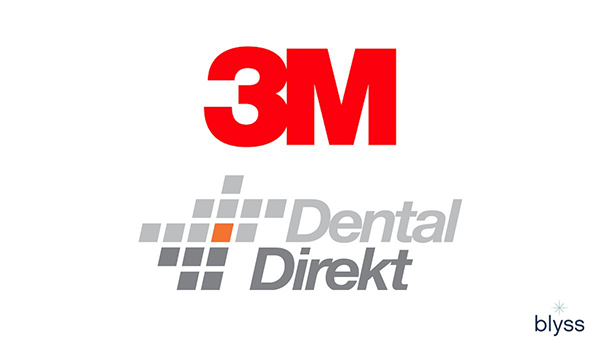
3M and Dental Direkt are among the top manufacturers of dental zirconia.
The certified manufacturers also provide a service warranty of at least 5 years.
The top companies for manufacturing zirconia dental crowns are 3M and Dental Direkt.
How much does a zirconia crown cost?
You can probably put down a range between $1000 to $3,000 for zirconia crowns. The cost of a single zirconia crown can vary greatly depending on several factors such as:
- the amount of tooth cutting and finishing required,
- the number of teeth that need crowns (you may get a discounted offer from your cosmetic dentist per unit in case of a multi-unit bridge treatment plan for instance),
- the number of additional procedures needed (such as the type of filling material used) before placing the final crown,
- whether or not you have insurance (what your policy covers according to your particular case), and
- the fees of the dentist (vary by city and state)
Are Zirconia veneers any good?
A lot of my clients prefer veneers over other kinds of dental restorations.
Mainly because placing veneers does not require a lot of tooth cutting and preparation when compared with other available options such as crown preparation.
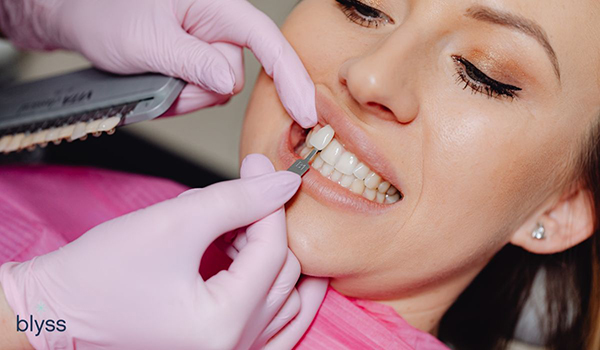
If you are opting for veneers instead of crowns, consider zirconia as your veneer material.
Also, the idea that veneers can completely overhaul a smile into a camera moment after going through very little to no discomfort is understandably appealing. Provided the dentist adheres to appropriate patient selection guidelines, diagnosis, and treatment objectives.
Related Article: What is the Best Dental Veneer Material for You?
Yttrium-stabilized zirconium dioxide primarily makes up zirconia veneers. Dental technicians carve them out of a solid block of zirconia in a process called milling.
Benefits of Zirconia Veneers
- 100% biologically friendly material
- Very good at hiding dark regions and stains inside the tooth (on account of zirconia’s opacity)
- Zirconia veneers are strong without giving them a bulky look
- An ideal choice for those of you struggling with teeth grinding episodes (especially night grinding).
- A life span of 15-20 years + (depending on your oral hygiene and care)
The central idea behind veneers in dentistry is entrenched in the 3Cs: to cloak, camouflage, and cover up an undesirable shade, texture, or shape of a particular tooth or set of teeth (especially the set we brandish in the front of our mouths).
And for the most part, zirconia veneers make a pretty good job of it; i.e. in terms of delivering a natural and unaltered look towards a pearly-white smile line.
But what if you’re looking for that extremely lifelike translucent (read glassy) one-of-a-kind look for your veneer makeover?
One that allows just enough of the underlying tooth to come through while blending harmoniously with the neighboring teeth.
If this is the case then you’re better off going for Emax veneers or lithium disilicate veneers for that more lifelike feel.
Good luck to your FnF groups trying to figure out which of your teeth are covered with Emax veneers!
Conclusion
While no artificial material is indestructible in the extremely harsh environment of our mouths, zirconia comes pretty close.
For one, it offers crack resistance that other materials can’t match.
In addition, zirconia is also an excellent choice for cases that involve hiding darkened teeth or dentin (on account of its opacity) that would otherwise show through other materials, or for people dealing with teeth grinding (superior strength).
If you are considering getting a zirconia crown, then you should ask your cosmetic dentist in San Diego these 9 questions. This will help ensure you get the best treatment possible for your dental needs.
Still don’t feel completely in the know when it comes to zirconia crowns?
Learn more about zirconia crowns by contacting us. Book your free consultation at Blyss Dental today!
References
https://www.webmd.com/oral-health/what-is-a-zirconia-crown
https://blog.ddslab.com/zirconia-dental-crowns-instead-of-pfm
Larsson, C. and Wennerberg, A., 2014. The clinical success of zirconia-based crowns: a systematic review. International Journal of Prosthodontics, 27(1).
Sun, T., Zhou, S., Lai, R., Liu, R., Ma, S., Zhou, Z. and Longquan, S., 2014. Load-bearing capacity and the recommended thickness of dental monolithic zirconia single crowns. Journal of the mechanical behavior of biomedical materials, 35, pp.93-101.
Azo Materials – The Applications of Zirconia in Jewelry
https://www.colgate.com/en-us/oral-health/bridges-and-crowns/what-are-zirconia-crowns
https://www.mouthhealthy.org/en/az-topics/c/crowns
https://www.zircon-association.org/difference-between-zircon-zirconia,zirconium.html
https://wikidiff.com/zirconia/zirconium
Alghazzawi, T.F., Lemons, J., Liu, P.R., Essig, M.E. and Janowski, G.M., 2012. Evaluation of the optical properties of CAD-CAM generated yttria-stabilized zirconia and glass-ceramic laminate veneers. The Journal of prosthetic dentistry, 107(5), pp.300-308.
